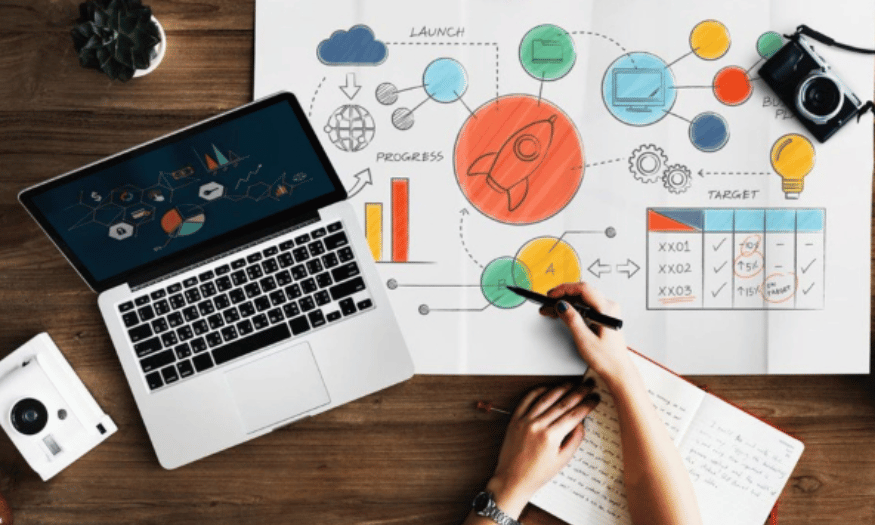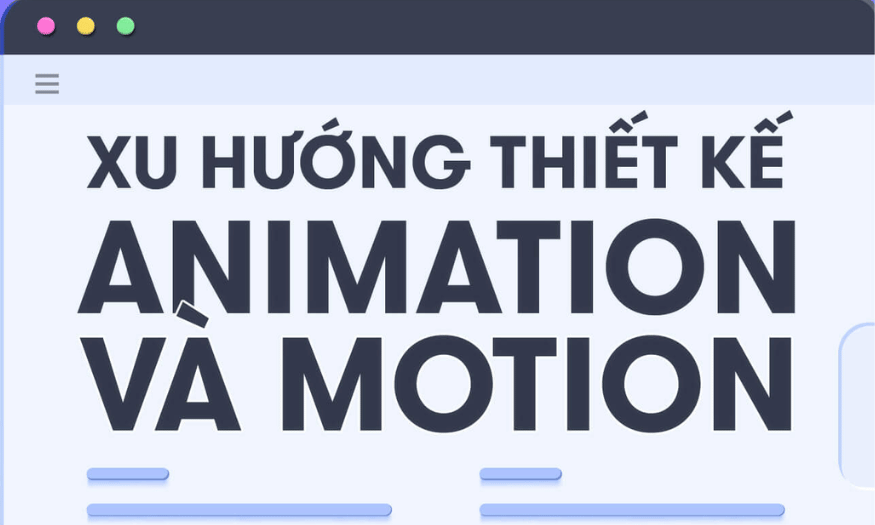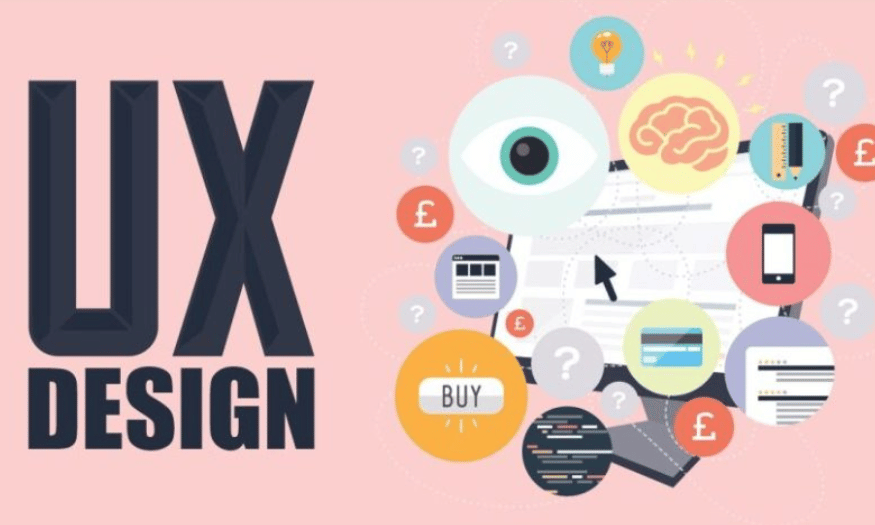Best Selling Products
Graphic Design Trends 2025: Leading the Way, Paving the Way for New Styles
Nội dung
- 1. Who: Designer's right-hand man
- 2. Personalize the user experience
- 3. Multi-sensory design
- 4. Connecting the real and virtual worlds
- 5. Sustainable and environmentally friendly design
- 6. Minimalist and clean design
- 7. User Experience and Interaction Design
- 8. Dynamic design
- 9. 3D design and virtual reality
- 10. User-centered design
- 11. Positive and inspirational design
- 12. Conclusion
In an increasingly digital landscape, designers must constantly innovate to keep up with consumer needs and preferences. In this article, Sadesign will explore with you the prominent trends in graphic design in 2025, from the application of artificial intelligence (AI) to the development of minimalist styles and optimizing user experience, paving the way for new and creative approaches.

In an increasingly digital landscape, designers must constantly innovate to keep up with consumer needs and preferences. In this article, Sadesign will explore with you the prominent trends in graphic design in 2025, from the application of artificial intelligence (AI) to the development of minimalist styles and optimizing user experience, paving the way for new and creative approaches.
1. Who: Designer's right-hand man
In today’s digital age, artificial intelligence (AI) has become an important part of many fields, and graphic design is no exception. The combination of humans and machines is opening up new horizons for designers, helping them optimize the creative process and expand their imagination. AI is not only a support tool but also a source of inspiration, helping designers find creative solutions that they never thought of before.
One of the most exciting aspects of AI in design is its ability to generate (generative) design. Through algorithms, AI can analyze millions of designs and create a series of variations in the blink of an eye. This not only saves time but also creates unique ideas that humans may not have explored. Thanks to AI, designers can sit and sip coffee and quickly choose the most satisfactory products from a wide range of options.
The development of AI also helps designers improve their skills and enrich their creative thinking. Instead of relying solely on personal experience, they can harness the power of AI to explore new trends and make truly intelligent design decisions. AI is not just a tool, but also an ally in the creative journey.
2. Personalize the user experience
With the explosion of big data, hyper-personalization is taking center stage in graphic design. Designers are now using data to create highly customized user experiences, tailoring content to individual preferences and behaviors. This trend not only brings convenience to users but also creates a deeper connection between brands and customers.
In web and app design, user interfaces can now “read” users to deliver the most relevant experience. For example, Spotify has used user data to create personalized music experiences through playlists like Discover Weekly. Similarly, in graphic design, interfaces can adapt to individual habits and preferences, creating an online space that feels familiar and comfortable to users.
Personalization goes beyond just changing colors or images, and extends to the content and functionality of a product. These designs not only create value for users, but also bring great benefits to brands in increasing loyalty and encouraging positive consumer behavior.
.png)
3. Multi-sensory design
Design is no longer just about the visual. By 2025, multisensory design, which incorporates elements such as sound, touch, and even smell, will become more common. This approach aims to create richer, more memorable experiences, especially in digital media and advertising. Multisensory design not only attracts attention but also creates deeper emotions for consumers.
For example, IKEA has implemented augmented reality (AR) in its IKEA Place app, allowing users to view furniture right in their living space via their smartphone. This provides a more realistic and immersive experience for customers, helping them visualize the product in their living environment. This technology not only creates interaction but also makes shopping more fun.
In addition, multisensory design also allows brands to convey messages more effectively. When combining multiple senses, consumers will easily remember and associate the product or service. This not only creates a strong impression but also promotes the attachment between customers and the brand.
4. Connecting the real and virtual worlds
As technology advances, the lines between physical and digital experiences continue to blur. Augmented reality (AR) and virtual reality (VR) are becoming integral to graphic design, offering new ways to interact with content. Designers are creating virtual showrooms, interactive AR ads, and VR-based storytelling experiences that provide users with a seamless transition between the real and digital worlds.
This technology will become a standard tool in the designer’s toolkit, providing new ways to experiment and present design ideas. For example, Apple with its ARKit product is transforming digital experiences by integrating virtual elements into the real world. Users can use their phones to view furniture in a real room or play games that appear right in their living room.
The combination of the real and virtual worlds not only brings new experiences but also creates opportunities for brands to build stronger images. Consumers will feel closer to products and brands, thereby increasing engagement and loyalty. This technology not only enriches the user experience but also opens up new business opportunities for businesses.
.png)
5. Sustainable and environmentally friendly design
Sustainability is becoming the hottest buzzword in modern design. By 2025, eco-friendly design will not only be a trend but a necessity. Designers are increasingly aware of the impact their products have on the environment and the community. They are shifting to using sustainable materials, reducing waste and creating products that last longer. This not only helps protect the planet but also creates positive values for brands and consumers.
A prime example of sustainable design is Minh Tu’s sprouting wedding invitations, which are not only beautiful but also eco-friendly. The invitations are made from paper that sprouts into plants after use, providing a unique experience for the recipient. This trend not only shows creativity but also emphasizes the importance of reusing and recycling, contributing to environmental protection.
This shift extends to digital design as well. Websites and applications are now not only focused on user interfaces and experiences, but also on energy efficiency and carbon footprint reduction. Designers are looking for ways to optimize code, reduce the resources needed to run them, and create products that are not only beautiful but also environmentally friendly. Adopting sustainable design solutions not only benefits the planet but also brands themselves, helping to enhance product value and attract customers.
6. Minimalist and clean design
Minimalism continues to be a strong trend in modern design. With the increase in information and clutter in everyday life, consumers are increasingly looking for simplicity and clarity. Minimalist designs focus on eliminating unnecessary elements, leaving only what is truly important. This not only helps to convey a message more effectively, but also creates a more pleasant and relaxing user experience.
Simple lines, ample white space, and a limited color palette are hallmarks of minimalist design. This trend reflects a broader cultural shift, as people seek to reduce clutter and find serenity in their lives. Such designs are not only beautiful, but also comfortable and approachable, making it easy for users to interact and connect with the product.
Furthermore, minimalist design also promotes creativity in conveying messages without relying on complex elements. Brands can easily build a strong image through simple yet effective designs. This not only helps them stand out from the crowd but also creates a memorable and impressive brand space for customers.
.png)
7. User Experience and Interaction Design
In 2025, interaction design will become an integral part of creating user experiences. Designers are increasingly focusing on how users interact with products, from the interface to the emotional elements. Combining graphic design and psychology will help create richer, more memorable experiences that make users not only use the product but feel deeply connected to it.
Modern websites and apps are using interactive elements like animations, instant feedback, and mini-games to keep users engaged. These elements not only make the experience more enjoyable, but also encourage users to engage and explore. Creating interactive experiences not only increases customer satisfaction but also drives brand loyalty.
Furthermore, interaction design also allows brands to collect valuable data about user behavior. This information can be used to improve products and services, thereby creating more personalized experiences for customers.
8. Dynamic design
Motion design is becoming a prominent trend in the design industry. Dynamic elements not only bring products to life but also help convey messages more effectively. In 2025, designers will continue to harness the power of animation to create more engaging and interactive experiences.
One of the biggest benefits of motion design is its ability to capture the user’s attention. Static images can sometimes be difficult to convey the message a designer wants to convey, while dynamic elements can highlight important points clearly. This not only improves the user experience, but also makes the product more engaging and memorable.
In addition, dynamic design also helps create smooth transitions between elements in the interface. This not only makes the user experience more natural, but also creates a sense of connection between parts of the product, making it easier for users to interact and use.
.png)
9. 3D design and virtual reality
3D design and virtual reality (VR) are becoming more popular than ever in 2025. With the development of technology, designers can create more vivid and realistic visual experiences. 3D design not only brings a new look but also helps users visualize the product more clearly in real space.
3D design products allow users to interact directly, creating a more intimate and familiar feeling. For example, in the fashion industry, brands are using 3D technology to allow customers to “try on” clothes before buying, creating a more enjoyable and convenient shopping experience.
Virtual reality is also opening up new possibilities for storytelling and messaging. Brands can use VR to create immersive experiences, allowing users to enter a virtual world and interact with content in a completely new way. This not only increases engagement but also helps brands create memorable experiences for their customers.
10. User-centered design
User-centered design is becoming a fundamental principle in the design industry. Designers are increasingly aware that understanding and meeting user needs is a prerequisite for creating successful products. In 2025, user research methods will be applied more strongly, from interviews, surveys to real-world testing.
User-centered design not only helps identify what people really need, but also creates products that provide real value to them. These designs are not only beautiful, but also functional and accessible, making users feel comfortable and satisfied when using them.
Furthermore, user-centered design opens up opportunities for creativity and innovation. When designers listen to user feedback and ideas, they can come up with unique and creative solutions to problems consumers face.
.png)
11. Positive and inspirational design
In an increasingly complex society, positive design is emerging as a strong trend. Designers want to not only create products but also convey positive messages and encourage change. In 2025, design will not only be about creating beautiful images but also about inspiring users to take action and contribute to society.
Positive design can be expressed through the use of bright colors, images that convey positive emotions, and messages that encourage human connection. Brands are increasingly focusing on creating products that not only provide material value but also create spiritual value for consumers.
Examples include social media campaigns that aim to raise awareness of social, environmental or health issues. These designs not only attract attention but also create a cohesive community, encouraging people to work together towards a common goal. Positive design not only makes a difference in the industry but also contributes to building a better society.
12. Conclusion
In general, graphic design trends in 2025 are not only a combination of art and technology but also a journey to explore cultural and social values. Designers will need to be flexible, creative and always updated with new trends to meet the diverse needs of the market. Innovation in design not only helps improve user experience but also creates sophisticated and highly applicable products.












































